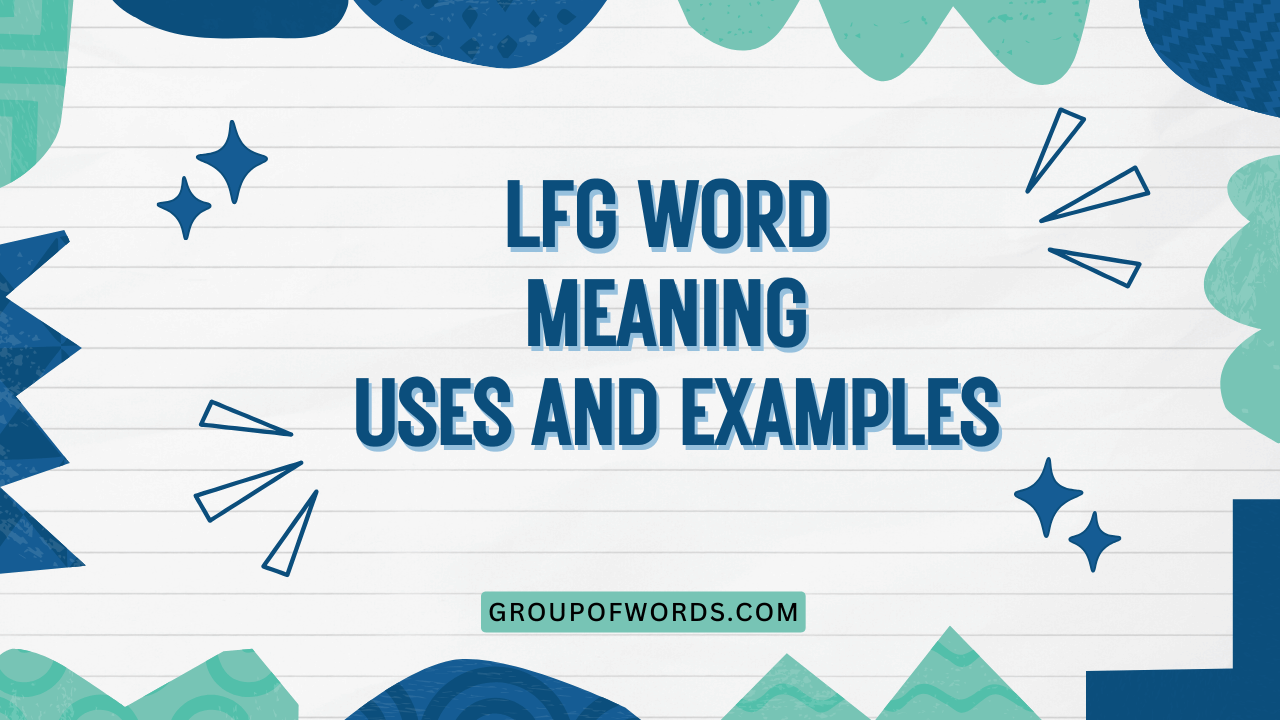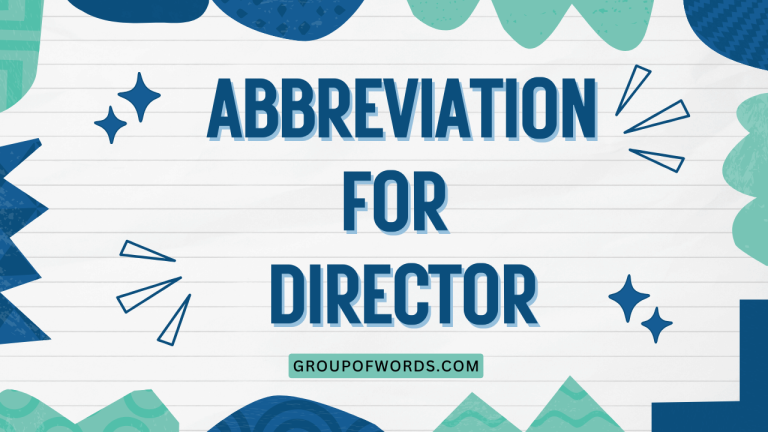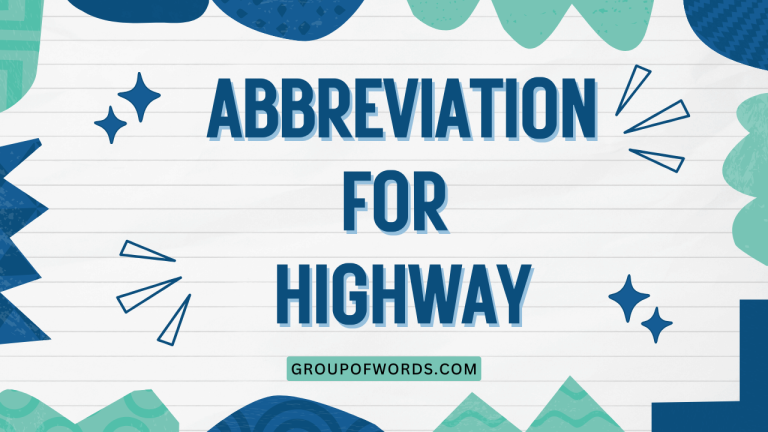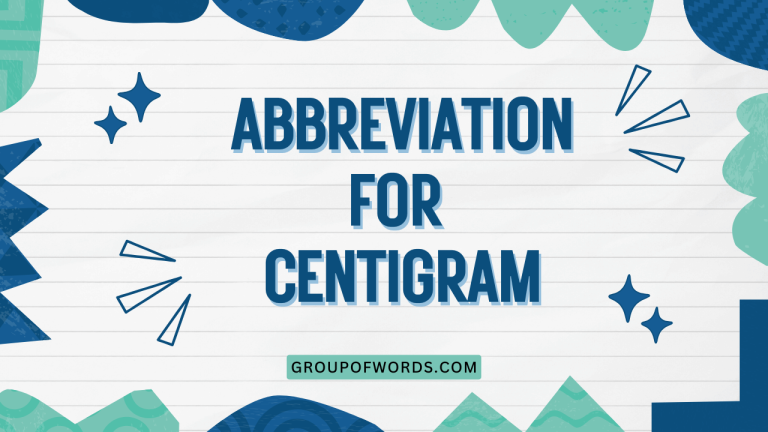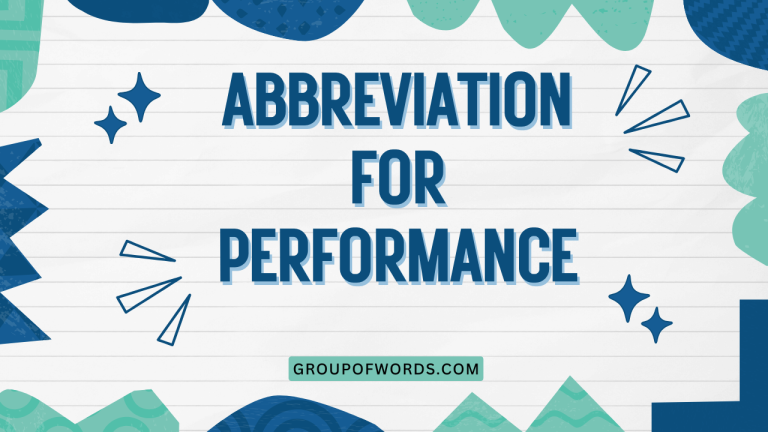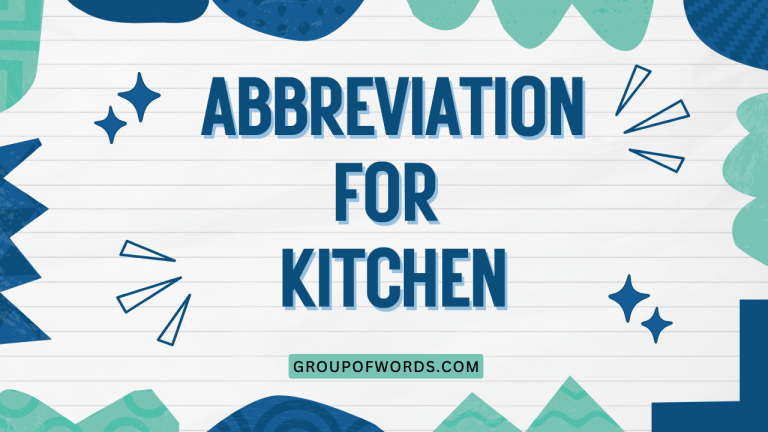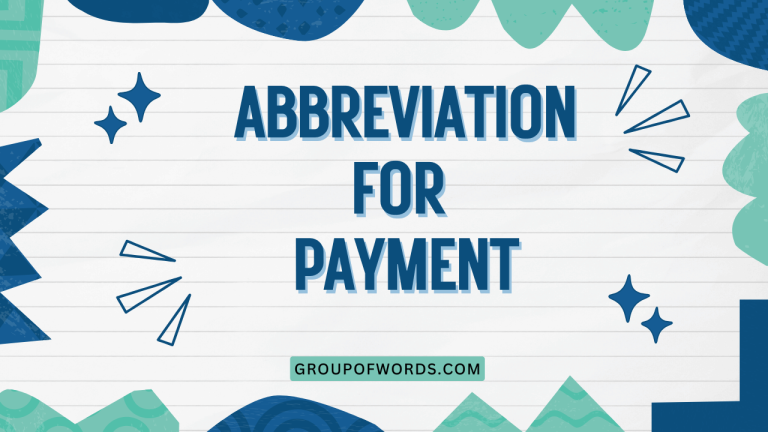LFG: Lexical Functional Grammar – Meaning, Uses, and Examples
Lexical Functional Grammar (LFG) is a linguistic theory that offers a unique approach to understanding the structure of language. Unlike other grammar models that focus solely on syntax, LFG integrates lexical information with syntactic structures to provide a more comprehensive representation of sentences.
Mastering LFG can significantly enhance your understanding of how grammar works, particularly in terms of the relationship between words and their functions within a sentence. This knowledge is invaluable for linguists, computational linguists, language learners, and anyone interested in the complexities of language structure.
Table of Contents
- Introduction
- Definition of Lexical Functional Grammar (LFG)
- Structural Breakdown of LFG
- Functional Structures (F-structures)
- Constituent Structures (C-structures)
- Lexical Entries
- Constraints in LFG
- Principles of LFG
- Categories in LFG
- Examples of LFG Analysis
- Simple Sentences
- Complex Sentences
- Passive Voice
- Relative Clauses
- Question Formation
- Usage Rules in LFG
- Agreement
- Government
- Completeness and Coherence
- Common Mistakes in LFG Analysis
- Practice Exercises
- Exercise 1: Identifying F-structures
- Exercise 2: Drawing C-structures
- Exercise 3: Applying Constraints
- Advanced Topics in LFG
- Optimality Theory and LFG
- Computational LFG
- Cross-Linguistic Variation in LFG
- Frequently Asked Questions (FAQ)
- Conclusion
Definition of Lexical Functional Grammar (LFG)
Lexical Functional Grammar (LFG) is a constraint-based, generative linguistic theory that analyzes the structure of natural language. It was developed by Joan Bresnan and Ronald Kaplan in the late 1970s and early 1980s as an alternative to transformational grammar.
LFG distinguishes between different levels of linguistic representation, primarily constituent structure (C-structure) and functional structure (F-structure). These structures are related through lexical entries and grammatical constraints.
LFG posits that the grammar of a language consists of a lexicon (a dictionary of words and their properties) and a set of rules that specify how words can be combined to form well-formed sentences. The lexicon plays a crucial role, as it encodes information about a word’s meaning, syntactic category, and grammatical functions.
This information is then used to build the C-structure and F-structure representations of a sentence.
The core idea behind LFG is that syntactic structures are not derived from underlying structures through transformations, but rather are built directly from the lexical properties of words. The theory emphasizes the importance of lexical information in determining the grammatical functions of words within a sentence.
LFG is widely used in computational linguistics, natural language processing, and theoretical linguistics.
Structural Breakdown of LFG
LFG operates with multiple levels of representation, but the two most important are the Constituent Structure (C-structure) and the Functional Structure (F-structure). Understanding these two structures and how they relate to each other is crucial for grasping the principles of LFG.
Functional Structures (F-structures)
The F-structure represents the grammatical functions and relationships within a sentence. It is an attribute-value matrix that specifies the grammatical functions of different constituents, such as SUBJECT, OBJECT, and PREDICATE.
The F-structure captures the functional organization of the sentence, showing how different parts of the sentence relate to each other grammatically. Think of it as a map of the grammatical roles played by each element.
For example, in the sentence “The cat chased the mouse,” the F-structure would indicate that “the cat” is the SUBJECT, “chased” is the PREDICATE, and “the mouse” is the OBJECT. These grammatical functions are crucial for understanding the meaning and structure of the sentence.
Constituent Structures (C-structures)
The C-structure represents the surface syntactic structure of a sentence, similar to a phrase structure tree in other grammatical formalisms. It shows how words are grouped into phrases and how these phrases are combined to form larger constituents.
The C-structure reflects the hierarchical organization of the sentence, showing how words and phrases are nested within each other. The C-structure is often represented as a tree diagram, with the root node representing the entire sentence and the leaf nodes representing the individual words.
For the sentence “The cat chased the mouse,” the C-structure would show that “the cat” is a noun phrase (NP), “chased the mouse” is a verb phrase (VP), and the entire sentence is a sentence (S). The C-structure provides a visual representation of the syntactic structure of the sentence.
Lexical Entries
Lexical entries are the dictionary entries for each word, specifying its syntactic category, grammatical functions, and other relevant information. Each lexical entry contains information about how the word contributes to both the C-structure and the F-structure.
The lexical entry acts as a bridge between the word and its role in the overall sentence structure. It is the place where the connection between the word and its grammatical function is explicitly defined.
For example, the lexical entry for the verb “chased” might specify that it is a verb (V), that it takes a SUBJECT and an OBJECT, and that it corresponds to the PREDICATE in the F-structure. This information is crucial for building the correct C-structure and F-structure for sentences containing the word “chased.”
Constraints in LFG
Constraints are rules that specify the relationships between the C-structure and the F-structure. They ensure that the F-structure is well-formed and consistent with the C-structure.
Constraints can specify agreement relationships, government relationships, and other grammatical dependencies. These constraints act as filters, ensuring that only grammatically correct sentences are generated.
There are several types of constraints in LFG, including:
- Uniqueness: Ensures that each attribute in the F-structure has only one value.
- Completeness: Ensures that all required attributes in the F-structure are present.
- Coherence: Ensures that all grammatical functions in the F-structure are properly licensed by the C-structure.
Principles of LFG
LFG operates under several key principles that guide its analysis of language:
- Parallelism: Different levels of representation (C-structure and F-structure) are generated in parallel, rather than being derived from each other through transformations.
- Lexicalism: The lexicon plays a central role in determining the grammatical structure of sentences.
- Constraint-based: Grammatical well-formedness is determined by a set of constraints that must be satisfied.
- Modularity: Different aspects of grammar (e.g., syntax, semantics, morphology) are treated as separate modules that interact with each other.
Categories in LFG
LFG uses a variety of categories to represent different types of constituents and grammatical functions. Some common categories include:
- S: Sentence
- NP: Noun Phrase
- VP: Verb Phrase
- PP: Prepositional Phrase
- N: Noun
- V: Verb
- P: Preposition
- ADJ: Adjective
- ADV: Adverb
Examples of LFG Analysis
To illustrate how LFG works, let’s consider some examples of sentence analysis. We’ll start with simple sentences and then move on to more complex ones.
Simple Sentences
Consider the sentence “The dog barks.” Here’s how LFG would analyze it:
C-structure:
S
/ \
NP VP
/ \ /
Det N V
| | |
The dog barks
F-structure:
[ PRED = 'bark <SUBJ>'
SUBJ = [ PRED = 'dog'
DEF = + ] ]
The C-structure shows the syntactic organization of the sentence, while the F-structure shows the grammatical functions. The F-structure indicates that “the dog” is the SUBJECT of the verb “barks.”
Here are some more examples of simple sentences and their LFG analyses:
| Sentence | C-structure (Simplified) | F-structure (Simplified) |
|---|---|---|
| The cat sleeps. | S → NP VP; NP → Det N; VP → V | [PRED = ‘sleep <SUBJ>’, SUBJ = [PRED = ‘cat’, DEF = +]] |
| Birds fly. | S → NP VP; NP → N; VP → V | [PRED = ‘fly <SUBJ>’, SUBJ = [PRED = ‘bird’]] |
| He runs. | S → NP VP; NP → Pronoun; VP → V | [PRED = ‘run <SUBJ>’, SUBJ = [PRED = ‘he’]] |
| She sings. | S → NP VP; NP → Pronoun; VP → V | [PRED = ‘sing <SUBJ>’, SUBJ = [PRED = ‘she’]] |
| It rains. | S → NP VP; NP → Pronoun; VP → V | [PRED = ‘rain <SUBJ>’, SUBJ = [PRED = ‘it’]] |
| We swim. | S → NP VP; NP → Pronoun; VP → V | [PRED = ‘swim <SUBJ>’, SUBJ = [PRED = ‘we’]] |
| They dance. | S → NP VP; NP → Pronoun; VP → V | [PRED = ‘dance <SUBJ>’, SUBJ = [PRED = ‘they’]] |
| John laughs. | S → NP VP; NP → N; VP → V | [PRED = ‘laugh <SUBJ>’, SUBJ = [PRED = ‘John’]] |
| Mary smiles. | S → NP VP; NP → N; VP → V | [PRED = ‘smile <SUBJ>’, SUBJ = [PRED = ‘Mary’]] |
| The sun shines. | S → NP VP; NP → Det N; VP → V | [PRED = ‘shine <SUBJ>’, SUBJ = [PRED = ‘sun’, DEF = +]] |
| The moon glows. | S → NP VP; NP → Det N; VP → V | [PRED = ‘glow <SUBJ>’, SUBJ = [PRED = ‘moon’, DEF = +]] |
| Stars twinkle. | S → NP VP; NP → N; VP → V | [PRED = ‘twinkle <SUBJ>’, SUBJ = [PRED = ‘star’]] |
| Flowers bloom. | S → NP VP; NP → N; VP → V | [PRED = ‘bloom <SUBJ>’, SUBJ = [PRED = ‘flower’]] |
| Trees grow. | S → NP VP; NP → N; VP → V | [PRED = ‘grow <SUBJ>’, SUBJ = [PRED = ‘tree’]] |
| The river flows. | S → NP VP; NP → Det N; VP → V | [PRED = ‘flow <SUBJ>’, SUBJ = [PRED = ‘river’, DEF = +]] |
| The wind blows. | S → NP VP; NP → Det N; VP → V | [PRED = ‘blow <SUBJ>’, SUBJ = [PRED = ‘wind’, DEF = +]] |
| The rain falls. | S → NP VP; NP → Det N; VP → V | [PRED = ‘fall <SUBJ>’, SUBJ = [PRED = ‘rain’, DEF = +]] |
| The snow melts. | S → NP VP; NP → Det N; VP → V | [PRED = ‘melt <SUBJ>’, SUBJ = [PRED = ‘snow’, DEF = +]] |
| The ice freezes. | S → NP VP; NP → Det N; VP → V | [PRED = ‘freeze <SUBJ>’, SUBJ = [PRED = ‘ice’, DEF = +]] |
| The fire burns. | S → NP VP; NP → Det N; VP → V | [PRED = ‘burn <SUBJ>’, SUBJ = [PRED = ‘fire’, DEF = +]] |
These examples illustrate how LFG represents the grammatical functions of simple sentences.
Complex Sentences
Complex sentences involve multiple clauses and more intricate grammatical relationships. Consider the sentence “The girl who smiled waved.”
C-structure:
S
/ \
NP VP
/ \ /
Det N V
| | |
The girl waved
|
S'
|
S
|
smiled
F-structure:
[ PRED = 'wave <SUBJ>'
SUBJ = [ PRED = 'girl'
DEF = +
(↑ REL) = [ PRED = 'smile <SUBJ>'
SUBJ = ↑ ] ] ]
In this case, the F-structure shows that “the girl” is the SUBJECT of “waved,” and the relative clause “who smiled” modifies “the girl.” The (↑ REL) notation indicates that the F-structure of the relative clause is embedded within the F-structure of the noun phrase.
Here are more examples of complex sentences:
| Sentence | C-structure (Simplified) | F-structure (Simplified) |
|---|---|---|
| The book that I read was interesting. | S → NP VP; NP → Det N S’; S’ → S; VP → V ADJ | [PRED = ‘interesting <SUBJ>’, SUBJ = [PRED = ‘book’, DEF = +, (↑ REL) = [PRED = ‘read <SUBJ, OBJ>’, SUBJ = ‘I’, OBJ = ↑]]] |
| The man who helped me is kind. | S → NP VP; NP → Det N S’; S’ → S; VP → V ADJ | [PRED = ‘kind <SUBJ>’, SUBJ = [PRED = ‘man’, DEF = +, (↑ REL) = [PRED = ‘help <SUBJ, OBJ>’, SUBJ = ↑, OBJ = ‘me’]]] |
| The car that he bought is new. | S → NP VP; NP → Det N S’; S’ → S; VP → V ADJ | [PRED = ‘new <SUBJ>’, SUBJ = [PRED = ‘car’, DEF = +, (↑ REL) = [PRED = ‘buy <SUBJ, OBJ>’, SUBJ = ‘he’, OBJ = ↑]]] |
| The house where I live is big. | S → NP VP; NP → Det N S’; S’ → S; VP → V ADJ | [PRED = ‘big <SUBJ>’, SUBJ = [PRED = ‘house’, DEF = +, (↑ REL) = [PRED = ‘live <SUBJ>’, SUBJ = ‘I’, OBL = ↑]]] |
| The song that she sang was beautiful. | S → NP VP; NP → Det N S’; S’ → S; VP → V ADJ | [PRED = ‘beautiful <SUBJ>’, SUBJ = [PRED = ‘song’, DEF = +, (↑ REL) = [PRED = ‘sing <SUBJ, OBJ>’, SUBJ = ‘she’, OBJ = ↑]]] |
| The movie that we watched was exciting. | S → NP VP; NP → Det N S’; S’ → S; VP → V ADJ | [PRED = ‘exciting <SUBJ>’, SUBJ = [PRED = ‘movie’, DEF = +, (↑ REL) = [PRED = ‘watch <SUBJ, OBJ>’, SUBJ = ‘we’, OBJ = ↑]]] |
| The food that I ate was delicious. | S → NP VP; NP → Det N S’; S’ → S; VP → V ADJ | [PRED = ‘delicious <SUBJ>’, SUBJ = [PRED = ‘food’, DEF = +, (↑ REL) = [PRED = ‘eat <SUBJ, OBJ>’, SUBJ = ‘I’, OBJ = ↑]]] |
| The coffee that he drank was strong. | S → NP VP; NP → Det N S’; S’ → S; VP → V ADJ | [PRED = ‘strong <SUBJ>’, SUBJ = [PRED = ‘coffee’, DEF = +, (↑ REL) = [PRED = ‘drink <SUBJ, OBJ>’, SUBJ = ‘he’, OBJ = ↑]]] |
| The music that they played was loud. | S → NP VP; NP → Det N S’; S’ → S; VP → V ADJ | [PRED = ‘loud <SUBJ>’, SUBJ = [PRED = ‘music’, DEF = +, (↑ REL) = [PRED = ‘play <SUBJ, OBJ>’, SUBJ = ‘they’, OBJ = ↑]]] |
| The game that we won was hard. | S → NP VP; NP → Det N S’; S’ → S; VP → V ADJ | [PRED = ‘hard <SUBJ>’, SUBJ = [PRED = ‘game’, DEF = +, (↑ REL) = [PRED = ‘win <SUBJ, OBJ>’, SUBJ = ‘we’, OBJ = ↑]]] |
| The test that I took was difficult. | S → NP VP; NP → Det N S’; S’ → S; VP → V ADJ | [PRED = ‘difficult <SUBJ>’, SUBJ = [PRED = ‘test’, DEF = +, (↑ REL) = [PRED = ‘take <SUBJ, OBJ>’, SUBJ = ‘I’, OBJ = ↑]]] |
| The class that she teaches is interesting. | S → NP VP; NP → Det N S’; S’ → S; VP → V ADJ | [PRED = ‘interesting <SUBJ>’, SUBJ = [PRED = ‘class’, DEF = +, (↑ REL) = [PRED = ‘teach <SUBJ, OBJ>’, SUBJ = ‘she’, OBJ = ↑]]] |
| The project that he completed was successful. | S → NP VP; NP → Det N S’; S’ → S; VP → V ADJ | [PRED = ‘successful <SUBJ>’, SUBJ = [PRED = ‘project’, DEF = +, (↑ REL) = [PRED = ‘complete <SUBJ, OBJ>’, SUBJ = ‘he’, OBJ = ↑]]] |
| The job that I applied for is challenging. | S → NP VP; NP → Det N S’; S’ → S; VP → V ADJ | [PRED = ‘challenging <SUBJ>’, SUBJ = [PRED = ‘job’, DEF = +, (↑ REL) = [PRED = ‘apply <SUBJ, OBL>’, SUBJ = ‘I’, OBL = ↑]]] |
| The problem that we solved was complex. | S → NP VP; NP → Det N S’; S’ → S; VP → V ADJ | [PRED = ‘complex <SUBJ>’, SUBJ = [PRED = ‘problem’, DEF = +, (↑ REL) = [PRED = ‘solve <SUBJ, OBJ>’, SUBJ = ‘we’, OBJ = ↑]]] |
| The solution that she found was innovative. | S → NP VP; NP → Det N S’; S’ → S; VP → V ADJ | [PRED = ‘innovative <SUBJ>’, SUBJ = [PRED = ‘solution’, DEF = +, (↑ REL) = [PRED = ‘find <SUBJ, OBJ>’, SUBJ = ‘she’, OBJ = ↑]]] |
| The technology that they developed is advanced. | S → NP VP; NP → Det N S’; S’ → S; VP → V ADJ | [PRED = ‘advanced <SUBJ>’, SUBJ = [PRED = ‘technology’, DEF = +, (↑ REL) = [PRED = ‘develop <SUBJ, OBJ>’, SUBJ = ‘they’, OBJ = ↑]]] |
| The system that we built is efficient. | S → NP VP; NP → Det N S’; S’ → S; VP → V ADJ | [PRED = ‘efficient <SUBJ>’, SUBJ = [PRED = ‘system’, DEF = +, (↑ REL) = [PRED = ‘build <SUBJ, OBJ>’, SUBJ = ‘we’, OBJ = ↑]]] |
| The design that he created is elegant. | S → NP VP; NP → Det N S’; S’ → S; VP → V ADJ | [PRED = ‘elegant <SUBJ>’, SUBJ = [PRED = ‘design’, DEF = +, (↑ REL) = [PRED = ‘create <SUBJ, OBJ>’, SUBJ = ‘he’, OBJ = ↑]]] |
| The program that she wrote is effective. | S → NP VP; NP → Det N S’; S’ → S; VP → V ADJ | [PRED = ‘effective <SUBJ>’, SUBJ = [PRED = ‘program’, DEF = +, (↑ REL) = [PRED = ‘write <SUBJ, OBJ>’, SUBJ = ‘she’, OBJ = ↑]]] |
These examples show how LFG handles relative clauses and other complex structures.
Passive Voice
LFG elegantly handles passive voice constructions. Consider the sentence “The mouse was chased by the cat.”
C-structure:
S
/ \
NP VP
| / \
The Aux VP
| | |
mouse was chased
|
PP
|
by the cat
F-structure:
[ PRED = 'chase <SUBJ, OBJ>'
SUBJ = [ PRED = 'cat'
DEF = + ]
OBJ = [ PRED = 'mouse'
DEF = + ]
PASSIVE = + ]
Here, the F-structure indicates that “the cat” is the SUBJECT (although syntactically it’s in a by-phrase) and “the mouse” is the OBJECT. The “PASSIVE = +” feature indicates that the sentence is in the passive voice.
Here are some more examples of passive voice sentences:
| Sentence | C-structure (Simplified) | F-structure (Simplified) |
|---|---|---|
| The book was read by John. | S → NP VP; VP → V PP; PP → P NP | [PRED = ‘read <SUBJ, OBJ>’, SUBJ = ‘John’, OBJ = ‘book’, PASSIVE = +] |
| The letter was written by Mary. | S → NP VP; VP → V PP; PP → P NP | [PRED = ‘write <SUBJ, OBJ>’, SUBJ = ‘Mary’, OBJ = ‘letter’, PASSIVE = +] |
| The cake was eaten by him. | S → NP VP; VP → V PP; PP → P NP | [PRED = ‘eat <SUBJ, OBJ>’, SUBJ = ‘him’, OBJ = ‘cake’, PASSIVE = +] |
| The car was driven by her. | S → NP VP; VP → V PP; PP → P NP | [PRED = ‘drive <SUBJ, OBJ>’, SUBJ = ‘her’, OBJ = ‘car’, PASSIVE = +] |
| The house was built by them. | S → NP VP; VP → V PP; PP → P NP | [PRED = ‘build <SUBJ, OBJ>’, SUBJ = ‘them’, OBJ = ‘house’, PASSIVE = +] |
| The song was sung by her. | S → NP VP; VP → V PP; PP → P NP | [PRED = ‘sing <SUBJ, OBJ>’, SUBJ = ‘her’, OBJ = ‘song’, PASSIVE = +] |
| The picture was painted by John. | S → NP VP; VP → V PP; PP → P NP | [PRED = ‘paint <SUBJ, OBJ>’, SUBJ = ‘John’, OBJ = ‘picture’, PASSIVE = +] |
| The story was told by Mary. | S → NP VP; VP → V PP; PP → P NP | [PRED = ‘tell <SUBJ, OBJ>’, SUBJ = ‘Mary’, OBJ = ‘story’, PASSIVE = +] |
| The truth was revealed by him. | S → NP VP; VP → V PP; PP → P NP | [PRED = ‘reveal <SUBJ, OBJ>’, SUBJ = ‘him’, OBJ = ‘truth’, PASSIVE = +] |
| The secret was kept by her. | S → NP VP; VP → V PP; PP → P NP | [PRED = ‘keep <SUBJ, OBJ>’, SUBJ = ‘her’, OBJ = ‘secret’, PASSIVE = +] |
| The door was opened by him. | S → NP VP; VP → V PP; PP → P NP | [PRED = ‘open <SUBJ, OBJ>’, SUBJ = ‘him’, OBJ = ‘door’, PASSIVE = +] |
| The window was closed by her. | S → NP VP; VP → V PP; PP → P NP | [PRED = ‘close <SUBJ, OBJ>’, SUBJ = ‘her’, OBJ = ‘window’, PASSIVE = +] |
| The light was turned on by him. | S → NP VP; VP → V PP; PP → P NP | [PRED = ‘turn on <SUBJ, OBJ>’, SUBJ = ‘him’, OBJ = ‘light’, PASSIVE = +] |
| The television was watched by her. | S → NP VP; VP → V PP; PP → P NP | [PRED = ‘watch <SUBJ, OBJ>’, SUBJ = ‘her’, OBJ = ‘television’, PASSIVE = +] |
| The radio was listened to by him. | S → NP VP; VP → V PP; PP → P NP | [PRED = ‘listen to <SUBJ, OBJ>’, SUBJ = ‘him’, OBJ = ‘radio’, PASSIVE = +] |
| The phone was answered by her. | S → NP VP; VP → V PP; PP → P NP | [PRED = ‘answer <SUBJ, OBJ>’, SUBJ = ‘her’, OBJ = ‘phone’, PASSIVE = +] |
| The question was asked by him. | S → NP VP; VP → V PP; PP → P NP | [PRED = ‘ask <SUBJ, OBJ>’, SUBJ = ‘him’, OBJ = ‘question’, PASSIVE = +] |
| The answer was given by her. | S → NP VP; VP → V PP; PP → P NP | [PRED = ‘give <SUBJ, OBJ>’, SUBJ = ‘her’, OBJ = ‘answer’, PASSIVE = +] |
| The mistake was made by him. | S → NP VP; VP → V PP; PP → P NP | [PRED = ‘make <SUBJ, OBJ>’, SUBJ = ‘him’, OBJ = ‘mistake’, PASSIVE = +] |
| The decision was made by her. | S → NP VP; VP → V PP; PP → P NP | [PRED = ‘make <SUBJ, OBJ>’, SUBJ = ‘her’, OBJ = ‘decision’, PASSIVE = +] |
These examples demonstrate how LFG represents passive constructions by indicating the grammatical functions and the passive feature.
Relative Clauses
Relative clauses modify nouns and introduce additional information about them. Consider the sentence “The book that I read was interesting.”
C-structure:
S
/ \
NP VP
/ \ /
Det N V
| | |
The book was interesting
|
S'
|
S
|
I read
F-structure:
[ PRED = 'interesting <SUBJ>'
SUBJ = [ PRED = 'book'
DEF = +
(↑ REL) = [ PRED = 'read <SUBJ, OBJ>'
SUBJ = 'I'
OBJ = ↑ ] ] ]
The F-structure shows that the relative clause “that I read” modifies the noun “book.” The (↑ REL) notation indicates that the F-structure of the relative clause is embedded within the F-structure of the noun phrase.
Question Formation
LFG can also analyze question formation. Consider the question “What did John eat?”
C-structure:
S
/ \
Q VP
| / \
What Aux VP
| | |
did John eat
F-structure:
[ PRED = 'eat <SUBJ, OBJ>' SUBJ = 'John' OBJ = 'what' WH WH = + ]
The F-structure indicates that “what” is the OBJECT of the verb “eat” and that the sentence is a question (WH = +).
Usage Rules in LFG
LFG incorporates several usage rules that govern how grammatical functions and syntactic categories interact. These rules ensure that sentences are well-formed and adhere to the grammatical constraints of the language.
Agreement
Agreement refers to the phenomenon where certain features of one constituent must match the features of another constituent. For example, in English, the subject and verb must agree in number (singular or plural).
LFG captures agreement through constraints on the F-structure.
Consider the sentences:
- “The dog barks.” (Singular subject, singular verb)
- “The dogs bark.” (Plural subject, plural verb)
In LFG, these sentences would be analyzed with constraints ensuring that the NUM (number) feature of the SUBJECT matches the NUM feature of the PREDICATE.
Government
Government refers to the relationship between a head (such as a verb or preposition) and its dependents (such as its arguments or complements). The head governs the properties of its dependents, such as their case or grammatical function.
For example, in the sentence “John gave the book to Mary,” the verb “gave” governs the case of its arguments (“the book” and “Mary”). In LFG, this relationship is captured through constraints on the F-structure that specify the grammatical functions and properties of the arguments.
Completeness and Coherence
Completeness and coherence are two fundamental principles in LFG that ensure the well-formedness of F-structures.
- Completeness: An F-structure is complete if all the grammatical functions required by the predicate are present. For example, if a verb requires a subject and an object, both must be present in the F-structure.
- Coherence: An F-structure is coherent if all the grammatical functions present are licensed by the predicate. In other words, there should be no extraneous or ungrammatical functions in the F-structure.
These principles ensure that the F-structure accurately reflects the grammatical structure of the sentence and that all the necessary components are present and properly related.
Common Mistakes in LFG Analysis
When analyzing sentences using LFG, it’s easy to make mistakes, especially when dealing with complex structures. Here are some common pitfalls to avoid:
- Incorrectly identifying grammatical functions: Make sure you correctly identify the SUBJECT, OBJECT, and other grammatical functions in the sentence.
- Failing to capture agreement relationships: Ensure that agreement constraints are properly enforced in the F-structure.
- Violating completeness and coherence: Check that all required grammatical functions are present and properly licensed.
- Misinterpreting lexical entries: Pay close attention to the lexical entries of words, as they determine how the words contribute to the C-structure and F-structure.
- Overlooking embedded structures: Properly handle embedded clauses, relative clauses, and other complex structures by embedding their F-structures within the appropriate constituents.
Practice Exercises
To solidify your understanding of LFG, try these practice exercises:
Exercise 1: Identifying F-structures
For each of the following sentences, identify the F-structure:
- The cat sleeps on the mat.
- John likes Mary.
- The dog chased the ball.
- She gave him the book.
- They are playing football.
Answers:
- [ PRED = ‘sleep <SUBJ, OBL>’, SUBJ = [ PRED = ‘cat’, DEF = + ], OBL = [ PRED = ‘on <OBJ>’, OBJ = [ PRED = ‘mat’, DEF = + ] ] ]
- [ PRED = ‘like <SUBJ, OBJ>’, SUBJ = ‘John’, OBJ = ‘Mary’ ]
- [ PRED = ‘chase <SUBJ, OBJ>’, SUBJ = [ PRED = ‘dog’, DEF = + ], OBJ = [ PRED = ‘ball’, DEF = + ] ]
- [ PRED = ‘give <SUBJ, OBJ, IO>’, SUBJ = ‘she’, OBJ = [ PRED = ‘book’, DEF = + ], IO = ‘him’ ]
- [ PRED = ‘play <SUBJ, OBJ>’, SUBJ = ‘they’, OBJ = ‘football’, PROG = + ]
Exercise 2: Drawing C-structures
For each of the following sentences, draw the C-structure:
- The bird sings.
- He reads the newspaper.
- She is writing a letter.
- They watched the movie.
- John gave Mary flowers.
Answers:
-
S / \ NP VP / \ / Det N V | | | The bird sings -
S / \ NP VP | / \ He V NP | | \ reads Det N | | the newspaper -
S / \ NP VP | / \ She Aux VP | / \ is V NP | | \ writing a letter -
S / \ NP VP | / \ They V NP | | \ watched Det N | | the movie -
S / \ NP VP | / \ John V NP | | \ gave NP NP | | Mary flowers
Exercise 3: Applying Constraints
Identify the constraints that are violated in the following ungrammatical sentences:
- *The cat sleep.
- *John like Mary.
Answers:
- Agreement: The verb “sleep” does not agree with the singular subject “The cat.”
- Agreement: The verb “like” does not agree with the singular subject “John.”
Advanced Topics in LFG
Once you have a solid understanding of the basics of LFG, you can explore more advanced topics, such as:
Optimality Theory and LFG
Optimality Theory (OT) is a linguistic theory that views grammar as a system of ranked, violable constraints. In OT-LFG, the constraints of LFG are integrated with the constraint ranking mechanism of OT to model linguistic phenomena such as word order variation and syntactic markedness.
This approach allows for a more flexible and nuanced analysis of language, as it can account for cases where multiple constraints conflict and the optimal solution involves violating some constraints to satisfy others.
Computational LFG
Computational LFG involves the development of computer programs and algorithms for parsing and generating sentences using LFG. This field is closely related to natural language processing and computational linguistics.
Computational LFG systems can be used for tasks such as machine translation, information extraction, and question answering. These systems often rely on large-scale lexicons and sophisticated constraint solvers to handle the complexities of natural language.
Cross-Linguistic Variation in LFG
LFG has been applied to a wide range of languages, and it has proven to be a valuable tool for understanding cross-linguistic variation. By analyzing different languages within the LFG framework, linguists can identify commonalities and differences in their grammatical structures and usage rules.
This approach can shed light on the underlying principles of human language and the ways in which languages adapt and evolve over time.
Frequently Asked Questions (FAQ)
What is the main difference between LFG and other grammatical theories?
LFG differs from other theories, such as transformational grammar, by emphasizing lexical information and parallel processing of different levels of representation. It posits that syntactic structures are built directly from the lexical properties of words, rather than being derived through transformations.
How does LFG handle ambiguity?
LFG handles ambiguity by generating multiple F-structures for ambiguous sentences, each representing a different interpretation. These F-structures capture the different grammatical relationships and functions that are possible in the sentence.
What are the advantages of using LFG?
LFG offers several advantages, including its emphasis on lexical information, its ability to handle a wide range of linguistic phenomena, and its suitability for computational implementation. It provides a comprehensive and flexible framework for analyzing the structure of natural language.
Is LFG difficult to learn?
LFG can be challenging to learn at first, especially if you are not familiar with other grammatical theories. However, with practice and dedication, you can master the basics of LFG and begin to apply it to analyze sentences and understand the structure of language.
Where can I find more resources to learn LFG?
There are many resources available to learn LFG, including textbooks, online courses, and research papers. Some recommended resources include “Lexical Functional Grammar” by Joan Bresnan and “An Introduction to Lexical Functional Grammar” by Mary Dalrymple.
Conclusion
Lexical Functional Grammar is a powerful and versatile linguistic theory that offers a unique perspective on the structure of language. By integrating lexical information with syntactic structures, LFG provides a comprehensive framework for analyzing sentences and understanding the grammatical relationships between words.
Whether you are a linguist, a computational linguist, or simply someone interested in the complexities of language, mastering LFG can significantly enhance your understanding of how grammar works.
